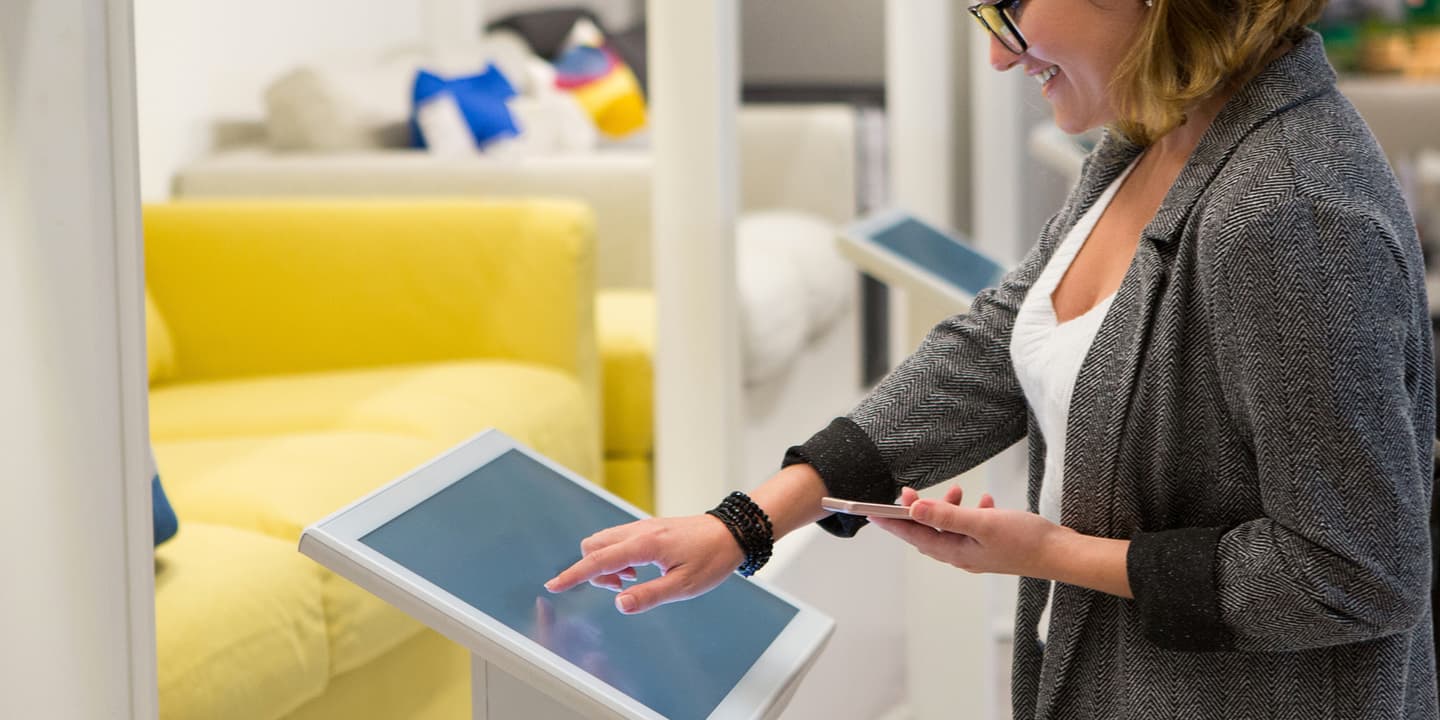# 4 ways technology can quickly align your business to evolving consumer expectations
The future success of your company may soon be decided on the “Battlefield of Customer Experience," according to a Gartner survey. 89% of the companies polled anticipated competing primarily on the basis of their customer experience - a 53% spike from the same survey four years prior.
When it comes to e-commerce or companies with any online presence, consumers expect options that meet their unique needs: “Quick purchasing and fast shipping, seamless transitions between stores and the web, accurate and timely information, and rich experiences that continue in the physical world.” [source]
With so many businesses now offering the same products at a lower price point, competing in some spaces becomes a race to the bottom of the barrel with few winners. The only way to truly differentiate and maintain relevance is to provide clear, upfront value through a truly unique customer experience (CX).
CX is important because our daily interactions with brands are imprinted on our mind as memorized stories. These stories influence a person’s perception of those brands, (whether they’re good or bad), and drive all future actions.
Customer experience is a critical part of a larger concept known as Experience design, which empowers business innovators with the mindsets, methods, and tools to transform their relationship with customers or employees by consistently delivering premium, differentiated experiences.
Businesses need to consistently meet customers’ expectations and desires, if not surpass them, to remain relevant to today’s consumers. Popular name brands like Apple and Amazon are successful because they have perfected the customer experience and, in the process, have become the standard by which all other experiences are subconsciously compared. The bar has been set, now it’s up to you to level up your game in order to compete.
The ability to incorporate cutting-edge technology to promote a better buying process and overall brand experience is increasingly imperative.
Here are some ways to embed technology into your CX efforts:
1. Seamless Self-Service
Although self-service business practices have existed for decades, advances in online storefronts have enabled customers to have greater autonomy over their purchase. This means that—contrary to public opinion—having less of a presence in your buyer’s journey might be the best strategy for delivering great customer experience.
67% of respondents preferred self-service online as opposed to speaking to a company representative, while 91% said they would use an online knowledge base if it were available and tailored to their needs. However, this doesn’t mean you are less informed or ignore the rest– quite the opposite in fact.
Expanding and optimizing your self-service options will not only help you better serve your customers, but it can lessen your internal workloads as well. The more streamlined and intuitive your self-service experience, the less time and resources your customer satisfaction teams will need. One solution is to take a mobile-first approach to the development of your online user experience, seeking to promote consistency across all of your channels.
In 2019, 62% of people with a smartphone used their mobile device to make a purchase, yet very few businesses place any significant strategy around their mobile-friendly platforms. This offers your company a valuable opportunity to redesign your mobile experience with today’s shopper in mind and get out ahead of competitors who are still slow in investing in mobile.
Experiences — like products or services — require in-depth research, design, and execution. Start with understanding people first by bringing the voice of the customer into each decision-making conversation through persona development. Then, bridge intentional design with nimble execution across data, people, process, and technology to deliver personal, emotionally resonant exchanges at defining touchpoints along the customer or employee journey.
Persona development is the starting point for understanding customer behavioral patterns. It’s important to conduct research to have a clear picture of not only who your customers are, but what their experience is like when using your site on a mobile device. Competitive benchmarking and application of best practices in mobile-first design can be useful at this stage too.
2. Timely Customer Communications
Although a self-service experience is desired by a majority, you will still be required to provide traditional communication methods for your customers. 75% of customers believe it takes too long to reach a live agent when they call customer services. Be sure your strategy prioritizes both speed and accuracy.
Phones still encapsulate nearly 70% of call center customer inquiries and are likely the most common mode of communication that your sales and customer support teams face, which is why finding a phone solution that allows for rapid, yet personalized, responses is imperative for effective external communication.
Businesses are looking toward smarter, more tech-savvy approaches to telecommunications, such as Voice over Internet Protocol (VoIP). VoIP is an internet phone system that works by converting your voice signals through broadband or wi-fi connections, as opposed to traditional, phone lines. VoIP can improve your CX by giving your team the ability to connect with more knowledgeable team members through messaging platforms and by offering visualized insights into response times for expedited service in future interactions.
3. Agile: Adapting to Customer Expectations
The concept of Agile was originally intended as a framework for iterative software development. However, as businesses continue to find new ways to gain a competitive advantage, they‘ve recognized that the same Agile principles intended for software can be deployed across the organization, from marketing to finance and HR.
Organizations that embrace Agile adapt quickly to changing consumer demand. By leveraging Agile, companies can gain a competitive advantage, delighting their customers with frequent feature delivery. Each iteration brings greater clarity, more accurate priorities, and clear progress toward realizing business value.
Perhaps the simplest way to intertwine your digital technology with an agile framework is to adopt tools that are specifically designed to alleviate workloads, giving your team the critical thinking time necessary to identify and execute changes to your customer experience mapping.
Workflow automation relies on artificial intelligence and machine learning, which allow programs to identify patterns and iterate them autonomically.
When automating customer support systems, automation can help your teams organize inquiries through automatic ticket creation and update customer information in your CRM database. And when used for your big data processing of customer information, your automation services can help you collect and develop critical analytics that would traditionally take hours or weeks to manually acquire.

4. Simplified Buying Through IoT
Internet of Things, or IoT, offers connectivity between customers, companies and their product offerings like never before. Simply put, as a>span class="Apple-converted-space"> technological ideology where every device—from alarm clocks to office security systems—is connected and synchronized through the internet.
The individual “things” that make up the IoT nebula are integrated through a designated IoT platform, which in turn allows each device to share the most relevant information. This helps businesses spot repeat errors, proactively diagnose problems and make highly accurate recommendations on current procedures.
The implications for improvements to customer experience are only limited by your creativity. And as more devices become connected through IoT (with a projected 3.5 billion IoT cellular connections by 2023), potential use cases will only further expand.
When you connect your products through IoT, customers will be able to request new orders with the press of a button, cutting down on sales times and providing the ultimate self-service experience. Pairing your existing products with IoT can also help you ensure that your products integrate easily with other relevant devices. This level of connectivity makes for a safer and more easily maintained product, as you can pair sensors and gauges that will notify both you and the customer when repairs are necessary.



